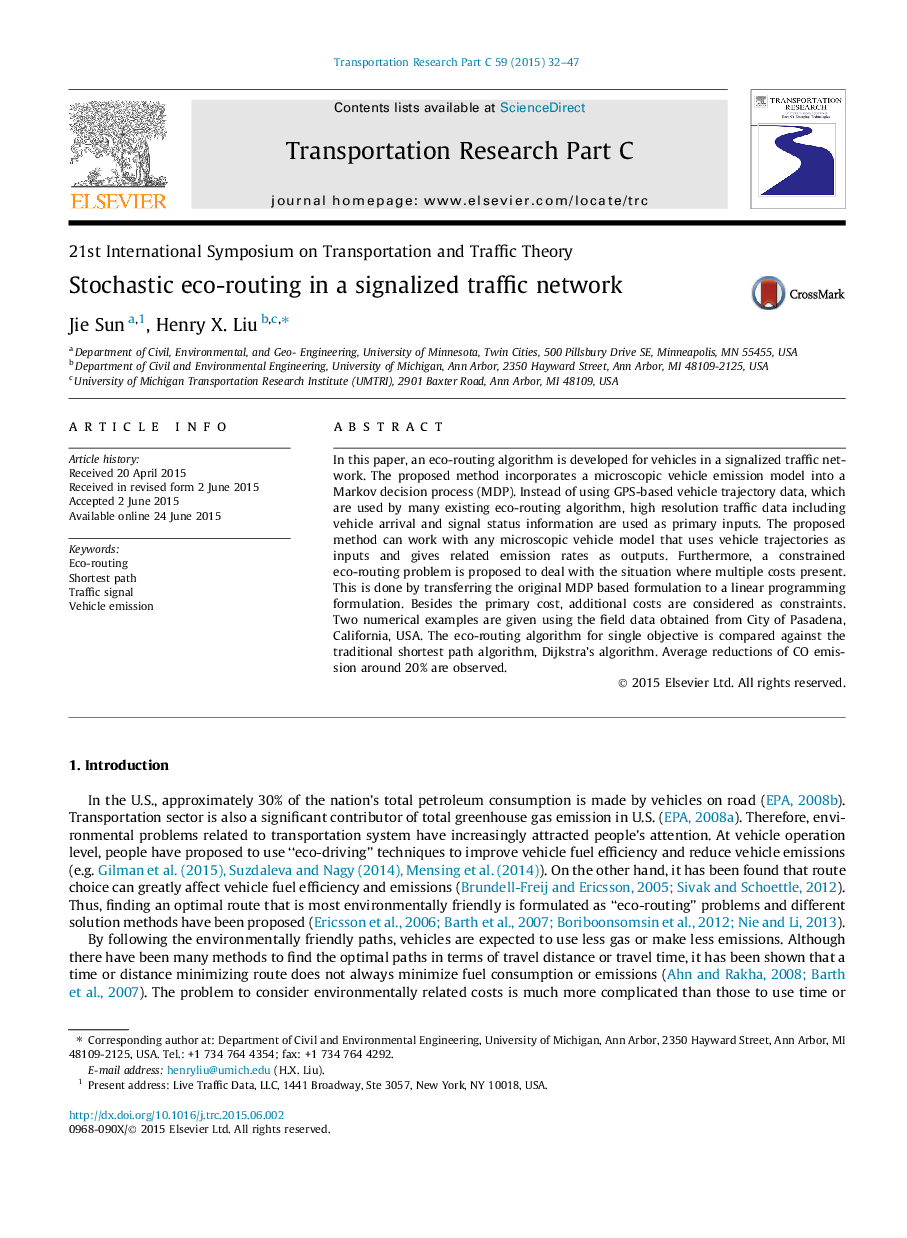| Article ID | Journal | Published Year | Pages | File Type |
|---|---|---|---|---|
| 524856 | Transportation Research Part C: Emerging Technologies | 2015 | 16 Pages |
•An eco-routing algorithm is developed for vehicles in a signalized traffic network.•A microscopic vehicle emission model is incorporated into a Markov decision process.•High resolution traffic data are used as primary inputs.•Average reductions of CO emission around 20% are observed.
In this paper, an eco-routing algorithm is developed for vehicles in a signalized traffic network. The proposed method incorporates a microscopic vehicle emission model into a Markov decision process (MDP). Instead of using GPS-based vehicle trajectory data, which are used by many existing eco-routing algorithm, high resolution traffic data including vehicle arrival and signal status information are used as primary inputs. The proposed method can work with any microscopic vehicle model that uses vehicle trajectories as inputs and gives related emission rates as outputs. Furthermore, a constrained eco-routing problem is proposed to deal with the situation where multiple costs present. This is done by transferring the original MDP based formulation to a linear programming formulation. Besides the primary cost, additional costs are considered as constraints. Two numerical examples are given using the field data obtained from City of Pasadena, California, USA. The eco-routing algorithm for single objective is compared against the traditional shortest path algorithm, Dijkstra’s algorithm. Average reductions of CO emission around 20% are observed.
